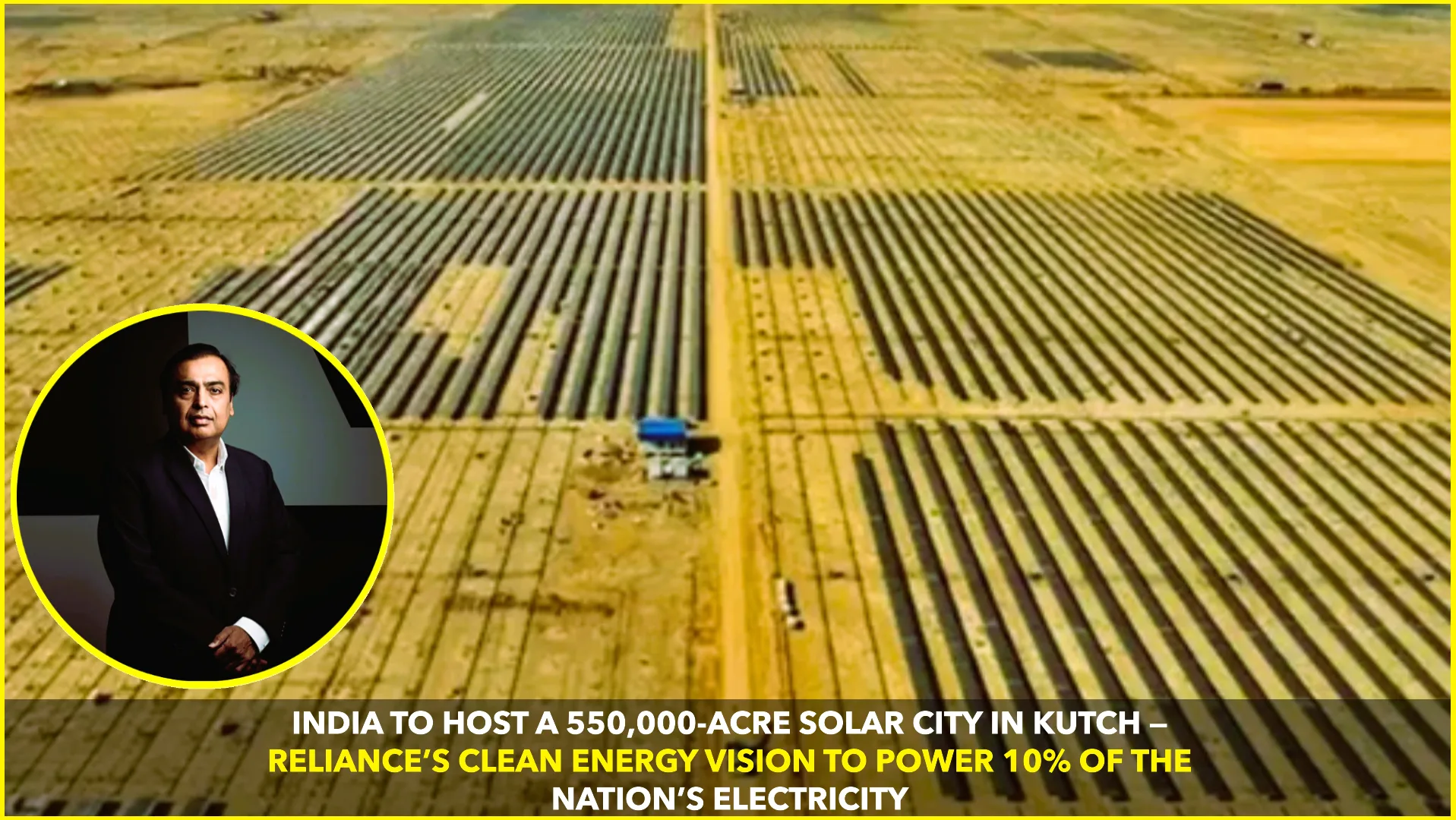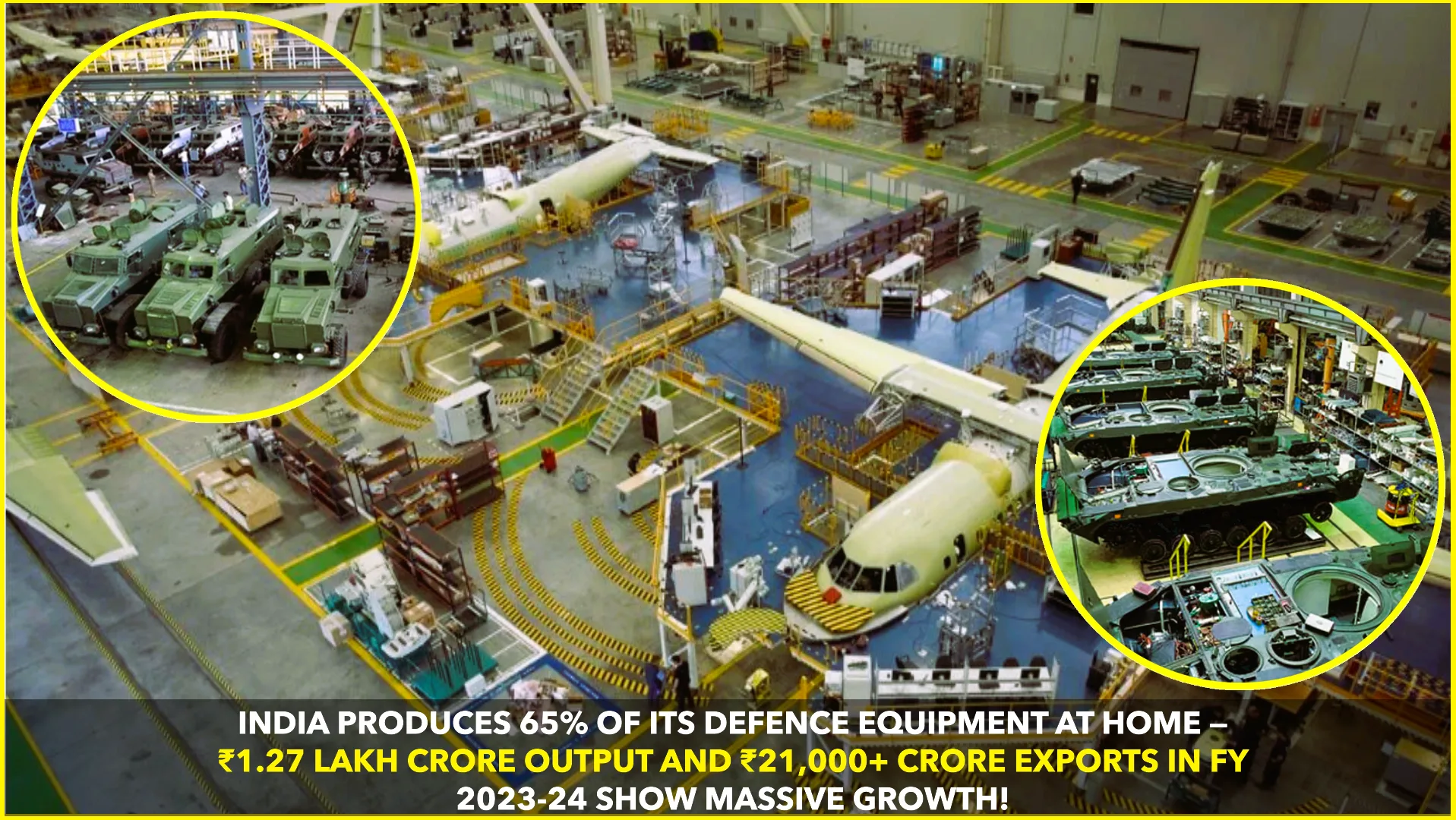Reliance Industries is gearing up to build what may become the world’s largest single-site solar park in Kutch, Gujarat — spanning a staggering 550,000 acres, nearly three times the land area of Singapore.
Announced during Reliance’s 48th Annual General Meeting, chairman Mukesh Ambani revealed that this mega project forms the core of the Dhirubhai Ambani Giga Energy Complex, an integrated clean-energy hub combining solar generation, battery storage, and green hydrogen production. The Economic Times+2Mercomindia.com+2
Scale and Ambition
At peak deployment, the project targets daily installation of 55 MW of solar modules and 150 MWh of battery storage capacity. Over time, Reliance expects this sprawling facility to meet up to 10 % of India’s electricity demand — a bold statement about its potential impact. India Infoline+2The Economic Times+2
Reliance already is rolling out its first 200 MW of high-efficiency heterojunction (HJT) solar modules from its Jamnagar facility. These modules are said to provide ~10 % more yield, 20 % better temperature performance, and 25 % lower degradation versus conventional panels.
Beyond solar, the Giga Energy Complex will house battery gigafactories (starting with 40 GWh capacity, expandable to 100 GWh) and electrolyzer factories to produce green hydrogen. Reliance aims to reach 3 million tonnes per annum (Mtpa) of green hydrogen equivalent capacity by 2032. India Infoline+2The Economic Times+2
Strategic Integration & Exports
To support this massive vision, the project is tightly integrated with Reliance’s coastal infrastructure at Jamnagar and Kandla. That linkage will help in transporting clean‐energy products (green ammonia, green methanol, sustainable aviation fuel) domestically and for export.
As part of its broader renewable push, Reliance is betting heavily on building a complete “from sand to electrons to green molecules” ecosystem — from raw solar harvesting to hydrogen production and downstream fuels. The Economic Times+2StartupPedia+2
Challenges & Considerations
While the plan is audacious, it’s not without risks and hurdles:
- Grid & transmission capacity: Evacuating and integrating such large-scale power requires strong transmission infrastructure. Finshots+2The Economic Times+2
- Water demand & maintenance: Large solar arrays need cleaning and cooling, which may stress water resources in arid Kutch.
- Ecological & land use: The region includes sensitive habitats and grazing lands; balancing community rights, ecological buffers, and development is crucial.
- Hydrogen logistics: Moving hydrogen at scale needs pipelines or infrastructure that is still under-development.
- Cost & economics: Green hydrogen remains expensive compared to fossil alternatives; realization depends heavily on scale, subsidies, and technological efficiency. Finshots
What It Signals
If successful, this solar megaproject could be a turning point in India’s energy journey — shifting from fossil dependence toward a cleaner, integrated system of solar + storage + hydrogen. It would also place India more firmly on the global map as a producer and exporter of green fuels.
But beyond pure scale, its success will depend on execution, sustainability, community integration, and technological viability. In short: it’s not just about building big but building smart.










